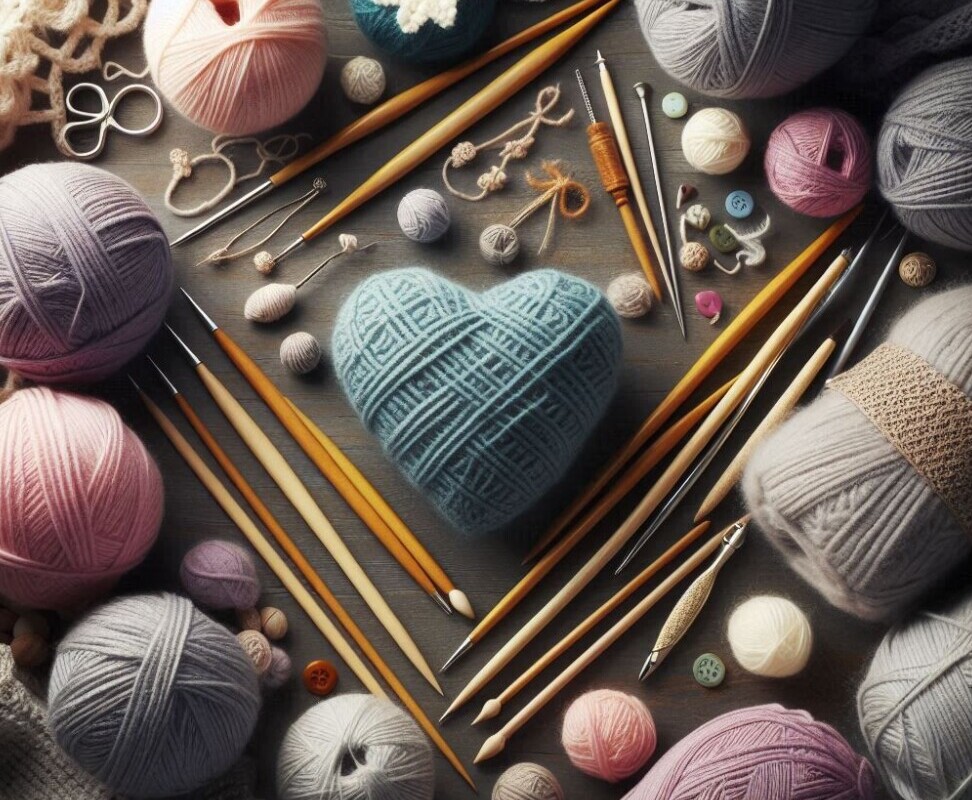When you’re diving into the world of knitting, the right tools and materials are your best companions. Picking quality items doesn’t just make your work look good, it makes the whole process a joy too. Yarn and needles are the dynamic duo; don’t skimp on them right from the start.
Let’s talk knitting needles. They come in all sorts of sizes, materials, and types. For beginners, bamboo needles are a win because they’re easier to grip and not as slippery as metal or plastic. Aim for a moderate size, like 8 or 9mm, it’s not too tiny and not too bulky.
Yarn is where you can really have fun. Go for medium-weight yarn, known as ‘worsted,’ which is perfect for newbies. Fibers like cotton and acrylic are friendly, won’t break the bank, and they come in a rainbow of colors. For now, avoid anything that looks like it belongs on a furry animal, trust me.
Optional tools aren’t just frills; they’re game-changers. Stitch markers help track your rows, a darning needle prevents your project from
Having a neat knitting kit helps keep you organized and ensures you focus on what truly matters – your knitting. A simple bag or basket with compartments will do the trick.
Mastering the Basics: Learning the Fundamental Knitting Stitches
Jumping into knitting basics means getting cozy with the knit and purl stitches. They’re like the bread and butter of knitting. Start with the knit stitch; it’s straightforward, and once you have it down, you’ll feel unstoppable. Yank the yarn over the needle, slip it through, and you’ve got your first knit stitch.
The purl stitch mixes things up a bit. It looks different but isn’t complicated. Mastering the purl opens up a world of patterns, like ribbing and stockinette, adding that extra flair to any project.
Creating your first piece, like a simple square, gives you a solid foundation. It’s repetitive and helps you gain confidence in controlling tension and counting stitches.
Gauge might sound technical, but it’s just about getting the right stitch size. Measure your stitches per inch to ensure your project doesn’t go wonky.
Don’t sweat beginner mishaps like missed stitches or accidental holes. These oops moments happen to everyone. Learning to fix them is key, whether it’s redoing a stitch or pulling the yarn back carefully without panic. unraveling, and A measuring tape keeps your creations just the right size.
A measuring tape keeps your creations just the right size.
Building Confidence: Creating Your First Simple Project
Taking all you’ve learned with stitches in hand, it’s time for your first real project. Picking a beginner-friendly pattern, like a scarf or dishcloth, is a surefire way to put those skills to use and see progress quickly. These projects are simple but rewarding.
Following a step-by-step guide for making a basic scarf lets you consolidate everything from casting on to binding off. As you knit, you’ll find how satisfying it is to watch each row build upon the last, unfolding into something real and tangible. Basic patterns keep instructions clear, focusing on knit and purl stitches, so you won’t get tangled in advanced jargon.
Reading knitting patterns is its special kind of literacy. Look for ones with simple language and clear visuals. Understanding abbreviations helps decode what you’re meant to do next, making the whole process more intuitive.
Once you’re comfy with the basics, mixing stitches adds variety. Playing around with combinations not only enhances your skills but also boosts creativity, making each project uniquely yours.
Wrapping up your project, mastering finishing techniques like weaving in ends ensures your project looks as polished as possible. Blocking, though optional, gives your piece that professionally finished look. Finally, don’t forget to give yourself a pat on the back and perhaps show off your work to friends or family. It’s an achievement worth celebrating!
No responses yet